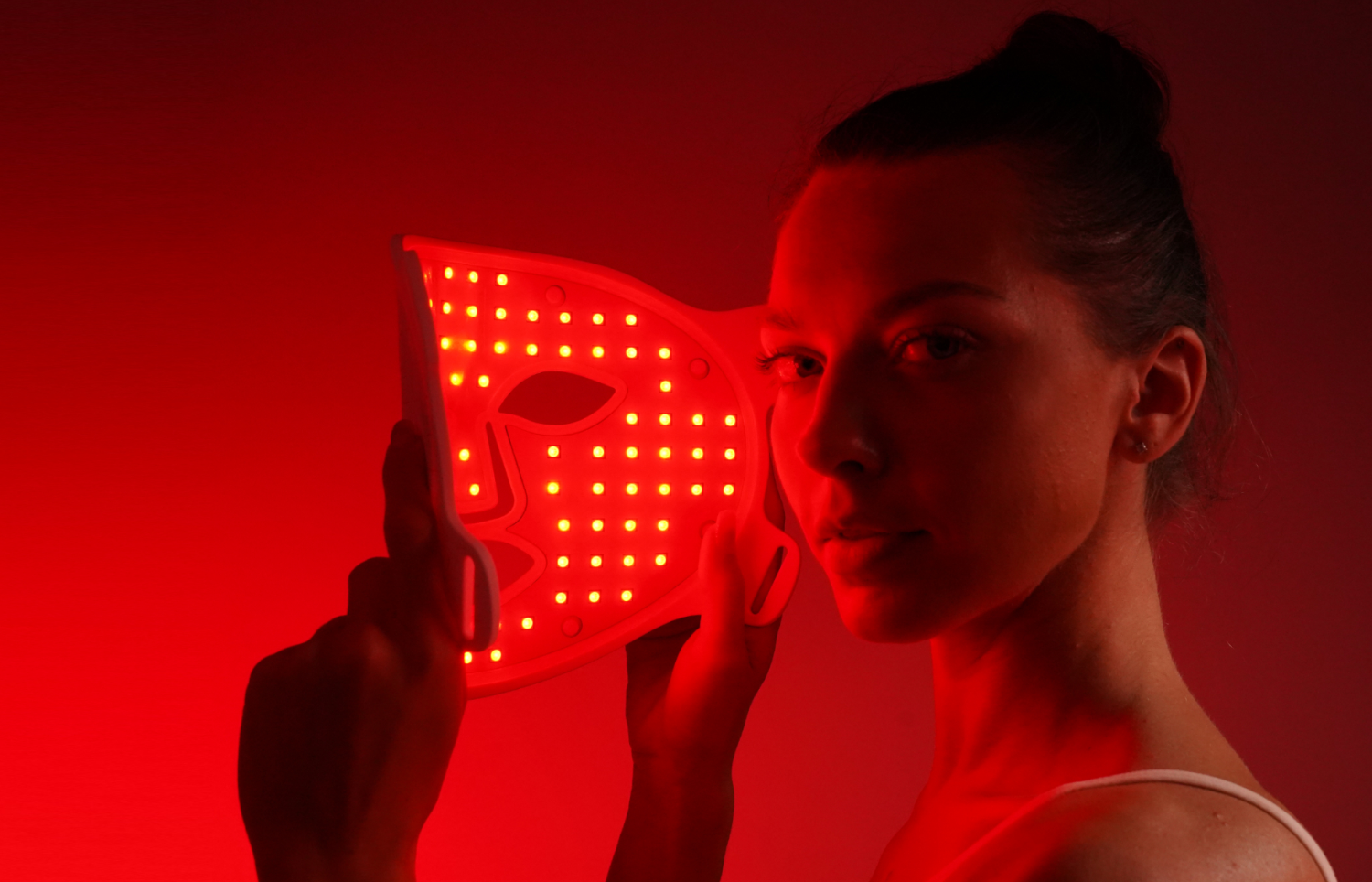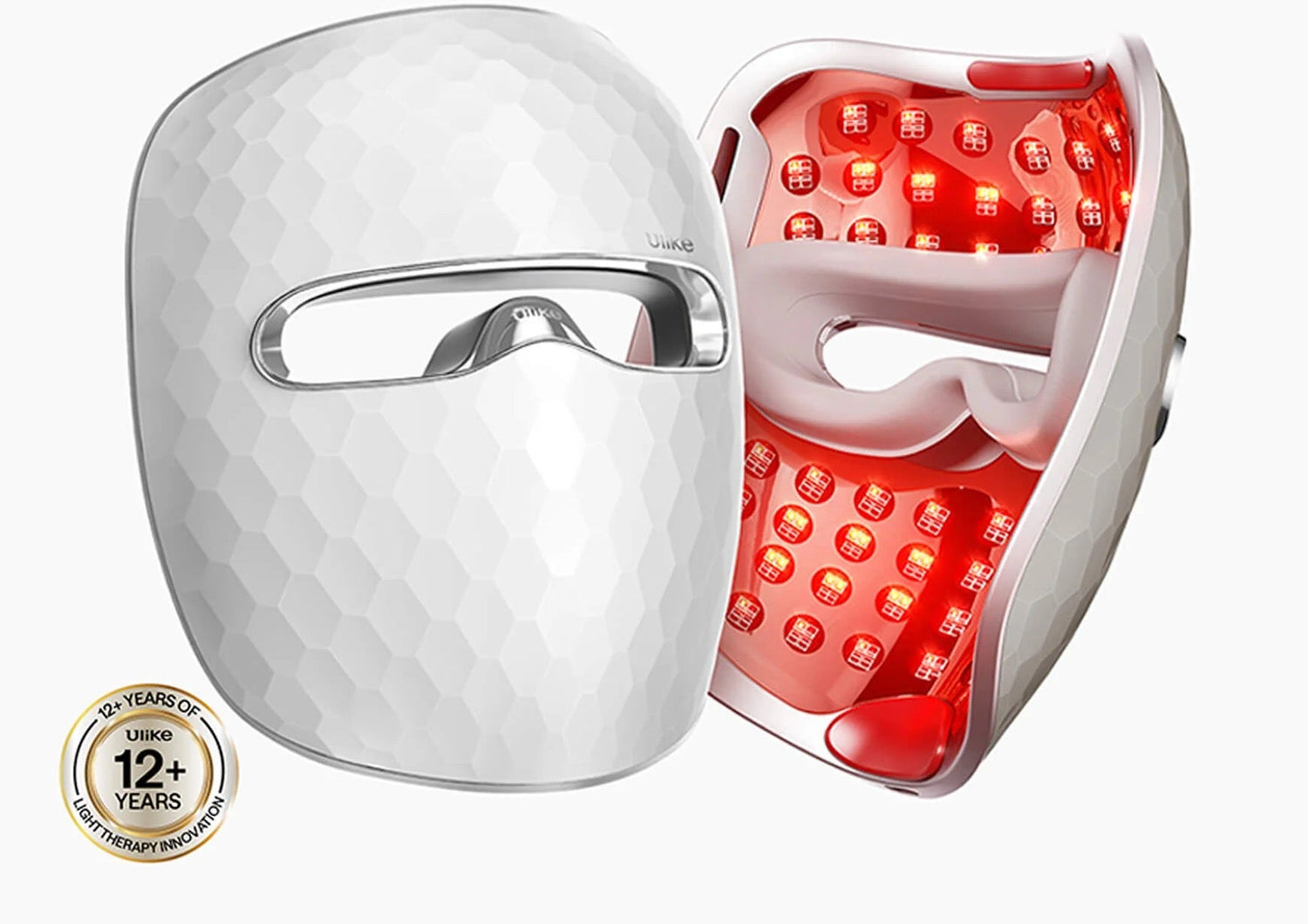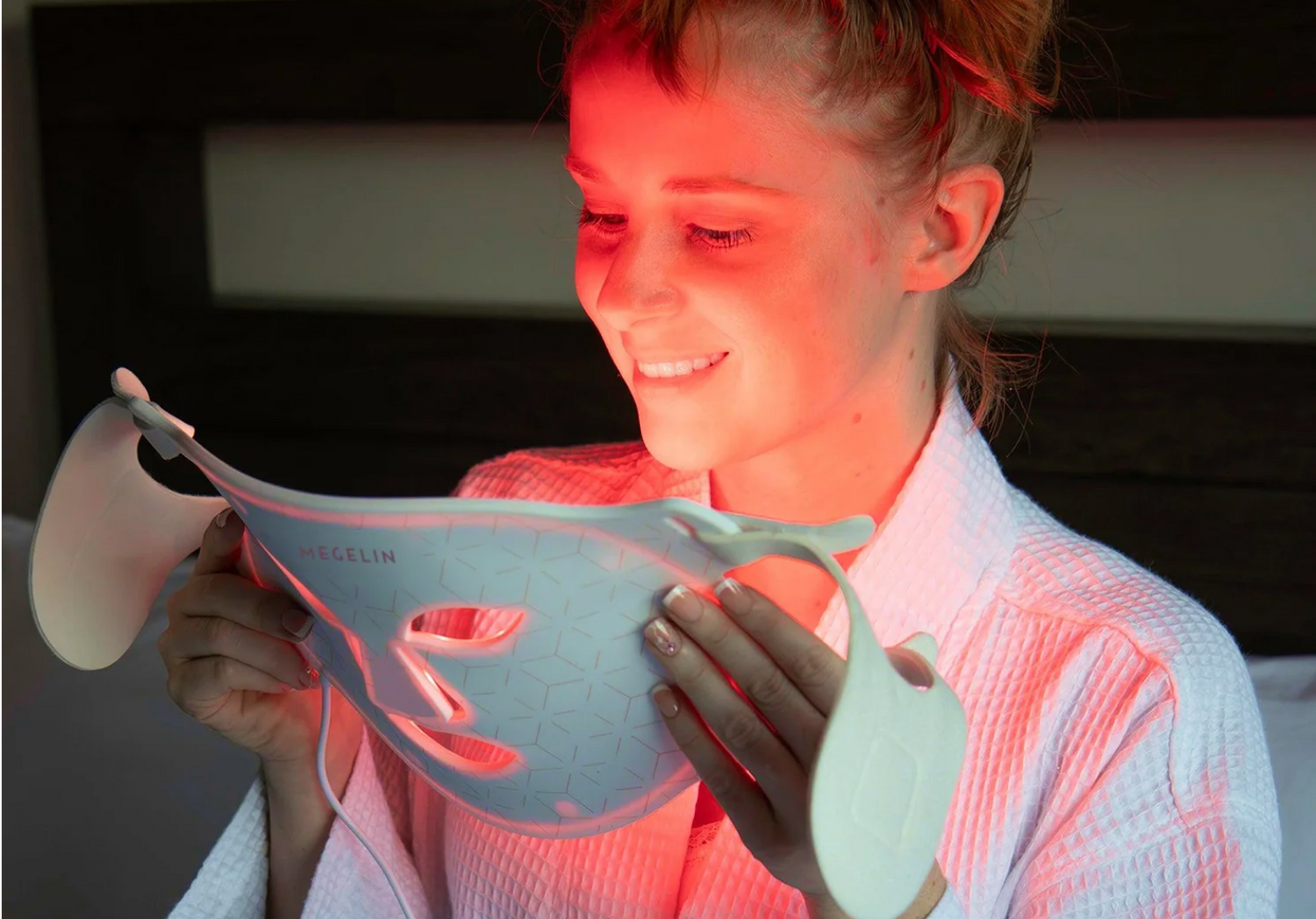
How Red Light Therapy for Alzheimer's Can Improve Symptoms
megelinbeautyCombining innovative therapies with routine fitness is a growing trend in holistic well-being. Red light therapy at Planet Fitness is at the forefront, offering non-invasive treatment with benefits like weight loss, muscle recovery, and improved skin health. It addresses joint pain, muscle soreness, and blood circulation while promoting relaxation and stress reduction. The therapy uses specific light wavelengths to penetrate the skin, stimulating cellular energy and ATP production without side effects, making it safe for fitness enhancement.
This article discusses the Planet Fitness Total Body Enhancement machine, explaining how red light therapy enhances workouts and overall wellness. It covers the therapy's science, impacts on pain relief, skin rejuvenation, and muscle recovery, and includes user experiences and testimonials. The article provides a thorough overview of benefits and practical usage tips for the Total Body Enhancement machine at Planet Fitness.
The Science Behind Red Light Therapy
How It Works
Red light therapy, specifically low-power transcranial near-infrared (IR) light, utilizes light-emitting diodes (LEDs) to deliver wavelengths outside the visible spectrum. These wavelengths penetrate the skin and skull efficiently, reaching the brain parenchyma. This form of light therapy has been shown to benefit various brain conditions and maintain a healthy brain state. The primary mechanism involves the stimulation of mitochondria by photons, enhancing the intracellular production of adenosine triphosphate (ATP). This is crucial as increased ATP levels help counteract the low ATP levels often associated with neurological disorders. Additionally, tNIR light improves oxygenation and regional circulation in the brain by triggering the production of nitric oxide, a potent vasodilator.
Biological Effects on the Brain
The therapeutic effects of tNIR light extend to anti-inflammatory functions through the modulation of the NF-κB system and the regulation of cytokines like tumor necrosis factor (TNFα). It also promotes neuroprotection by activating anti-apoptotic and anti-senescence pathways, thereby safeguarding both healthy and impaired brain cells. Furthermore, the light encourages neurogenesis and synaptogenesis by activating brain-derived neurotrophic factor (BDNF), essential for new neuronal and synaptic growth, which underpins the structural and functional integrity of the brain. Additionally, photobiomodulation helps regulate the production of cytokine-induced nitric oxide synthase, managing the levels of reactive oxygen species and controlling the oxidative stress associated with it. This aspect of red light therapy is particularly significant given its implications for neurodegenerative diseases like Alzheimer's, where oxidative stress plays a substantial role in disease progression.
The application of this technology in a home setting has been developed, utilizing a specific wavelength of 1,068 nanometers to optimize the therapeutic effects on brain health and cognitive function [1]. This approach has shown promising results in enhancing overall performance, memory, and motor functions in clinical settings, highlighting its potential as a non-invasive treatment for dementia and Alzheimer's disease [1].
Application of Red Light Therapy in Alzheimer's
Setup and Usage
Red light therapy for Alzheimer's is increasingly being applied through devices specifically designed for home use, allowing patients and caregivers to manage the therapy conveniently. These devices typically consist of helmets or caps embedded with LEDs that emit light at wavelengths proven to be effective for neurological applications. The setup process is straightforward, involving the placement of the device on the patient's head for a specified duration, usually ranging from a few minutes to half an hour, depending on the specific protocol recommended by healthcare professionals.
Clinical Settings vs. At-Home Devices
While red light therapy is administered in clinical settings under the supervision of medical professionals, the advent of at-home devices has made this treatment more accessible. In clinical settings, the therapy might be part of a broader treatment regimen and is often combined with other therapeutic interventions. These sessions are closely monitored, and the parameters of the therapy, such as intensity and duration of light exposure, are precisely controlled.
Conversely, at-home devices offer flexibility and ease of use but require users to adhere strictly to the guidelines provided with the devices to ensure safety and efficacy. Manufacturers of these home devices have worked to meet regulatory standards, ensuring that the light emitted is within the safe and therapeutic range. This democratization of treatment allows for regular, consistent application, which is crucial for observing significant benefits in conditions like Alzheimer's, where daily treatment can contribute to cognitive function and overall brain health.
Impact on Symptoms of Alzheimer's
Cognitive Functions
Red light therapy has demonstrated notable improvements in various cognitive functions among Alzheimer's patients. Clinical evidence suggests a significant enhancement in Mini-Mental State Examination (MMSE) scores, with an average increase of 4.8 points, indicating a notable improvement in cognitive capabilities [2]. Additionally, improvements were observed in memory retention and processing speed, as evidenced by increases in Logical Memory Tests and Trail Making Tests [2]. The Auditory Verbal Learning Test showed marked improvements across all subtests, further affirming the efficacy of red light therapy in enhancing cognitive functions in Alzheimer's patients [2].
Behavioral Symptoms
The application of red light therapy has also been linked to reductions in aggressive and agitated behaviors in Alzheimer's patients. Meta-analyses have shown that light therapy can significantly reduce these behavioral symptoms, likely through mechanisms involving the regulation of circadian rhythms and improvement of sleep quality [3]. This is particularly important as behavioral management is a critical aspect of overall Alzheimer's care, impacting both patient quality of life and caregiver burden [4].
Sleep Quality
Improving sleep quality and stabilizing circadian rhythms are among the most consistent benefits observed with red light therapy in Alzheimer's patients. Studies report that phototherapy corrected sleep and rest times, leading to more stable circadian rhythms and the development of healthier sleep habits [3]. This improvement in sleep efficiency not only enhances daytime alertness and mood but also contributes to better overall cognitive function and behavioral symptom management in Alzheimer's patients [4].
Safety and Side Effects
Non-invasive Nature
Red light therapy is generally considered safe when used correctly, particularly in the short term. Notably, this therapy does not involve ultraviolet rays, which are linked to skin cancer in other forms of light exposure. The equipment used typically filters out harmful UV light, greatly reducing the risk of skin damage such as premature aging or cancer [5][6]. Furthermore, the therapy's non-invasive nature means it does not require any surgical procedures, which minimizes the risk of infection or significant adverse reactions.
Reported Side Effects and Mitigating Risks
Despite its safety, red light therapy can have side effects, particularly when not used as directed. In clinical settings, red LED lights have been reported to cause temporary skin issues such as redness or blistering at high usage levels. To mitigate these risks, it is crucial to use protective goggles as the therapy may also cause eye strain or damage if the eyes are exposed directly to the light [6].
Patients with certain conditions or those taking photosensitizing medications should exercise caution. These include individuals with retinal diseases, those on lithium or certain antibiotics, and those with a history of skin cancer or systemic lupus erythematosus, as they may experience heightened sensitivity to the therapy [5].
Furthermore, while red light therapy devices are designed for safe home use, adherence to manufacturer guidelines is essential to avoid potential risks such as improper exposure times or incorrect light intensity, which could lead to adverse effects. The use of personal protective equipment and adherence to safety protocols, such as proper skin coverage and the use of materials with a high UV protection factor (UPF), are recommended to enhance safety during treatment sessions [5].
In summary, while red light therapy is a promising treatment for Alzheimer's with a good safety profile, it is not devoid of risks, especially if misused. Proper adherence to usage guidelines and precautions is vital to ensure the therapy's benefits are maximized while minimizing potential side effects.
Conclusion
Red light therapy (RLT) shows potential in treating Alzheimer's by improving cognitive function, memory, sleep, and behavioral symptoms. Its safety and ease of at-home use make it a valuable supplementary treatment. Clinical evidence suggests RLT can enhance patients' quality of life, encouraging a forward-looking approach to non-drug therapies. As research progresses, RLT's application may expand, inviting more discussions among healthcare professionals, caregivers, and patients about its role in Alzheimer's care, marking a new chapter in managing the disease.
FAQs
1. Can red light therapy be beneficial for Alzheimer's patients?
Red light therapy may aid in alleviating sleep issues and psycho-behavioral symptoms in individuals with Alzheimer’s disease. Unlike many pharmacological treatments, which can have side effects and increase the risk of falls, red light therapy is generally considered safe without significant side effects.
2. What improvements might dementia patients experience with light therapy?
Studies have shown that dementia patients undergoing light therapy may enjoy enhanced cognitive functions, improved sleep quality, reduced frequency of angry outbursts, decreased anxiety, and less tendency to wander.
3. Is red light effective in enhancing memory?
Recent research indicates that red light therapy can improve memory in Alzheimer's disease models by activating enzymes that reduce harmful substances like formaldehyde in the brain.
References
[1] - https://www.medicalnewstoday.com/articles/infrared-light-therapy-a-new-approach-to-dementia
[2] - https://www.ncbi.nlm.nih.gov/pmc/articles/PMC8219492/
[3] - https://www.ncbi.nlm.nih.gov/pmc/articles/PMC10699648/
[4] - https://www.medicalnewstoday.com/articles/light-therapy-may-help-improve-symptoms-of-alzheimers-disease
[5] - https://www.news-medical.net/health/Light-Therapy-Safety-and-Side-Effects.aspx
[6] - https://www.webmd.com/skin-problems-and-treatments/red-light-therapy











